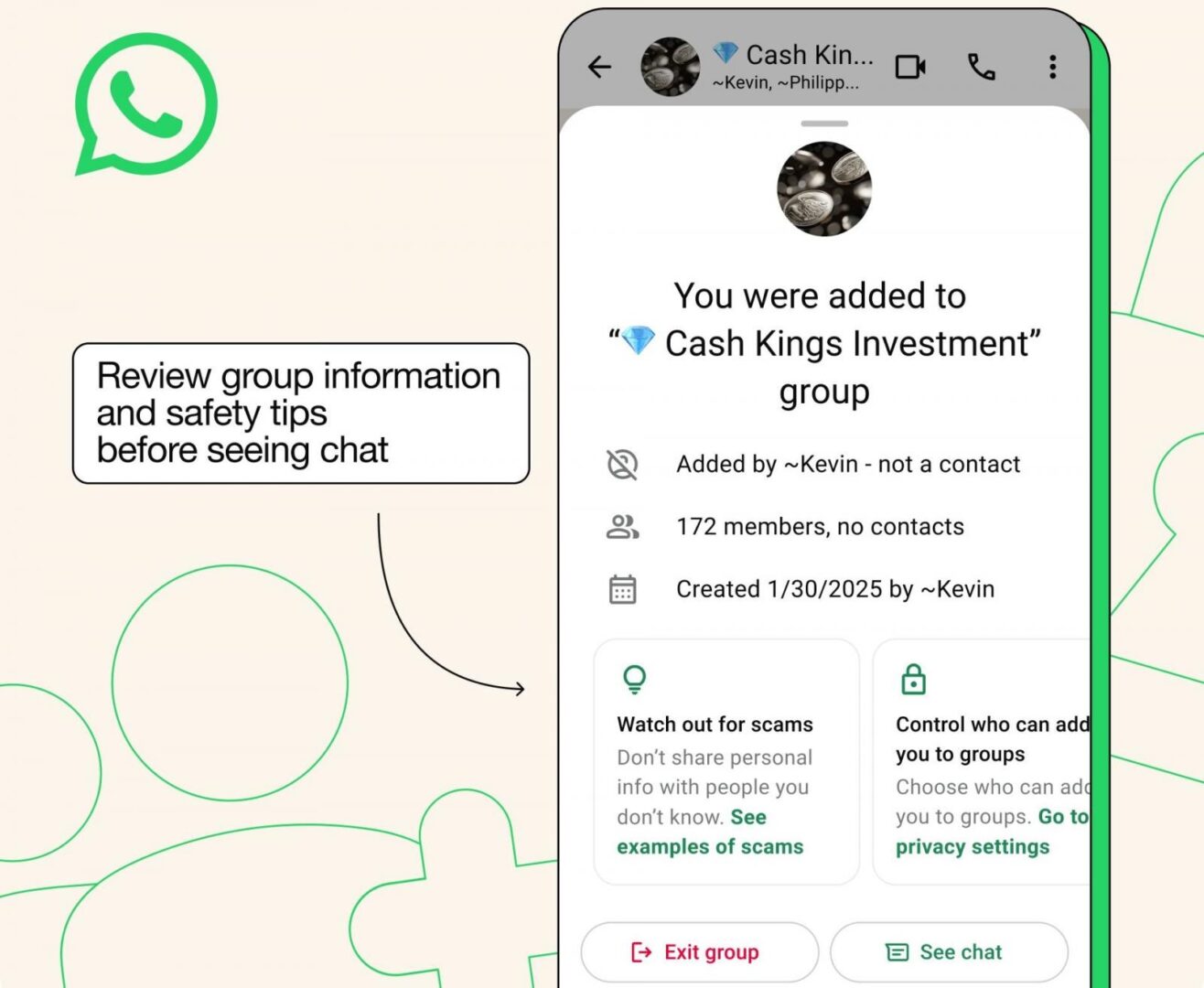The developers of WhatsApp have introduced a new security feature that will help users identify potential scammers when someone not in their contact list invites them to a group chat.
The new feature displays a “Safety overview” warning, which includes information about the group’s creation date, the number of its participants, and potential scam attempts. Additionally, the messenger will offer users instructions on configuring group addition settings.
“The warning will contain key information about the group and safety tips. After that, the user will be able to leave the group without even entering the chat,” the company said in a statement. “If after viewing the safety notification the group seems familiar to you, you will be able to view the chat for more information.”
To help users protect themselves from scammers attempting to contact them directly, WhatsApp will also notify users when someone outside of their contacts list tries to message them, providing additional information about that person.

“We urge you to pause and verify before responding to a suspicious or unusual message, especially if it comes from an unknown number and promises quick money,” the developers add.
The company noted in a statement that in just the first six months of 2025, more than 6.8 million accounts linked to scam centers targeting WhatsApp users were disabled.
Earlier this year, WhatsApp developers collaborated with OpenAI representatives to dismantle a scam center in Cambodia that was involved in various types of fraud. Victims were offered cryptocurrency investments, promised payment for fake likes, and were even lured into a financial pyramid scheme related to scooter rentals.
In one case, scammers generated initial messages using ChatGPT. These messages contained a link to a WhatsApp chat, which redirected the victim to Telegram, where, for example, they were asked to like a video on TikTok.
“Such fraudulent centers usually conduct several scam campaigns simultaneously, ranging from cryptocurrency investments to Ponzi schemes. The scam may start with a simple text message, and then the victim is prompted to follow up on social media, messaging apps, and subsequently on payment or cryptocurrency platforms,” the company warned.
